Paperweight History
Glass has been made for a very long time, but glass paperweight making is often divided into three periods of time beginning with the Classic Period 1840-1870. It is generally agreed that the glass paperweight first appeared in the mid-1840s and was popular for the practical use of holding down paper as well as a beautiful gift.
In the second period, popularity declined. From 1870 to 1950 the techniques and art of making paperweights declined nearly to the point of extinction. In the 1950s, paperweight making recaptured the interest of artists and collectors. In this third period, artists experimented with glass trying to replicate the fine work of the early makers, and they succeeded. Today, many artists are actively developing new glass making techniques as they make paperweights and paperweight-related works.
Some very fine paperweight artists are working in Southern California. Museums across the world display this art form, and numerous reference books are available to help identify paperweights, detail their history, and showcase the art.
In the second period, popularity declined. From 1870 to 1950 the techniques and art of making paperweights declined nearly to the point of extinction. In the 1950s, paperweight making recaptured the interest of artists and collectors. In this third period, artists experimented with glass trying to replicate the fine work of the early makers, and they succeeded. Today, many artists are actively developing new glass making techniques as they make paperweights and paperweight-related works.
Some very fine paperweight artists are working in Southern California. Museums across the world display this art form, and numerous reference books are available to help identify paperweights, detail their history, and showcase the art.
Types of Glass Paperweights
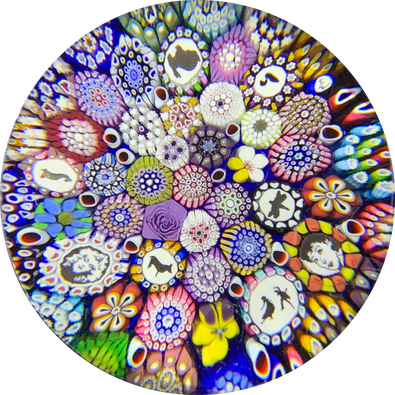
Millefiori is the Italian name for “thousand flowers.” Colorful glass rods are bundled together, fused, stretched very thin, cut into small pieces, set into a pattern, and encased in clear glass. Typical designs include concentric, closepack, and geometric.
Michael Hunter, 2019 Closepack Millefiori
Michael Hunter, 2019 Closepack Millefiori
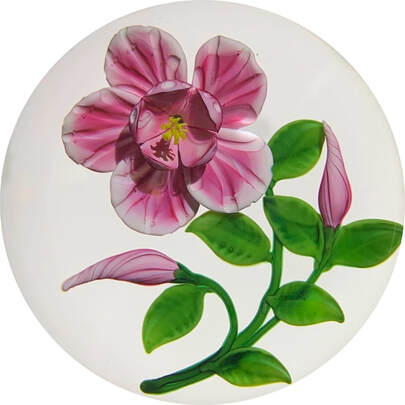 Randall Grubb Lampwork Hibiscus
Randall Grubb Lampwork Hibiscus
Lampwork paperweights contain elements such as flowers, fruits, insects, birds, fish, other animals or objects. These are made using small torches to shape the individual parts which are then fused together in a pleasing arrangement and encased in clear glass.
Randall Grubb, 1995 Pink Hibiscus
Randall Grubb, 1995 Pink Hibiscus
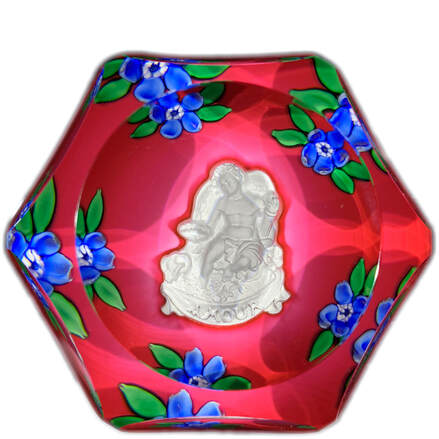
Sulphides, also called cameo incrustations, are opaque, usually white, busts or figures encased in glass and used to decorate clear glass objects.
Saint-Louis, 1979 "Amour"
Saint-Louis, 1979 "Amour"
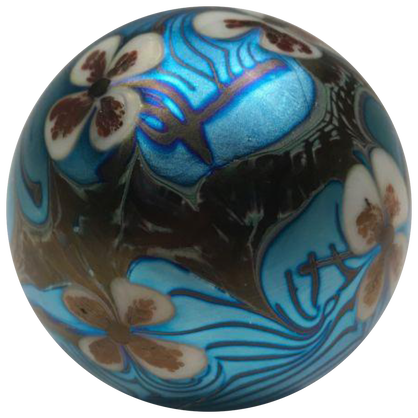
Surface decorated paperweights have an opaque surface onto which various kinds of designs are applied. They often have an iridescent element as in this example.
Orient & Flume, 1976
Orient & Flume, 1976
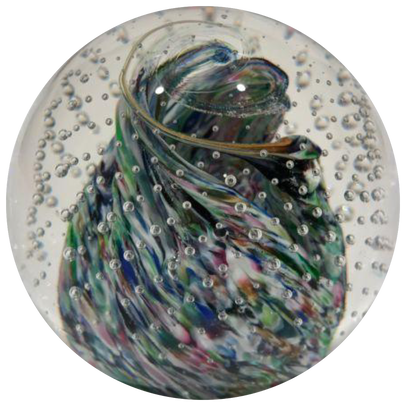
Abstract designs Usually made of clear and/or colored glass, these freeform designs may be very simple with a few random bubbles, or more complex with controlled bubbles and colored representational designs.
Caithness Glass
Caithness Glass